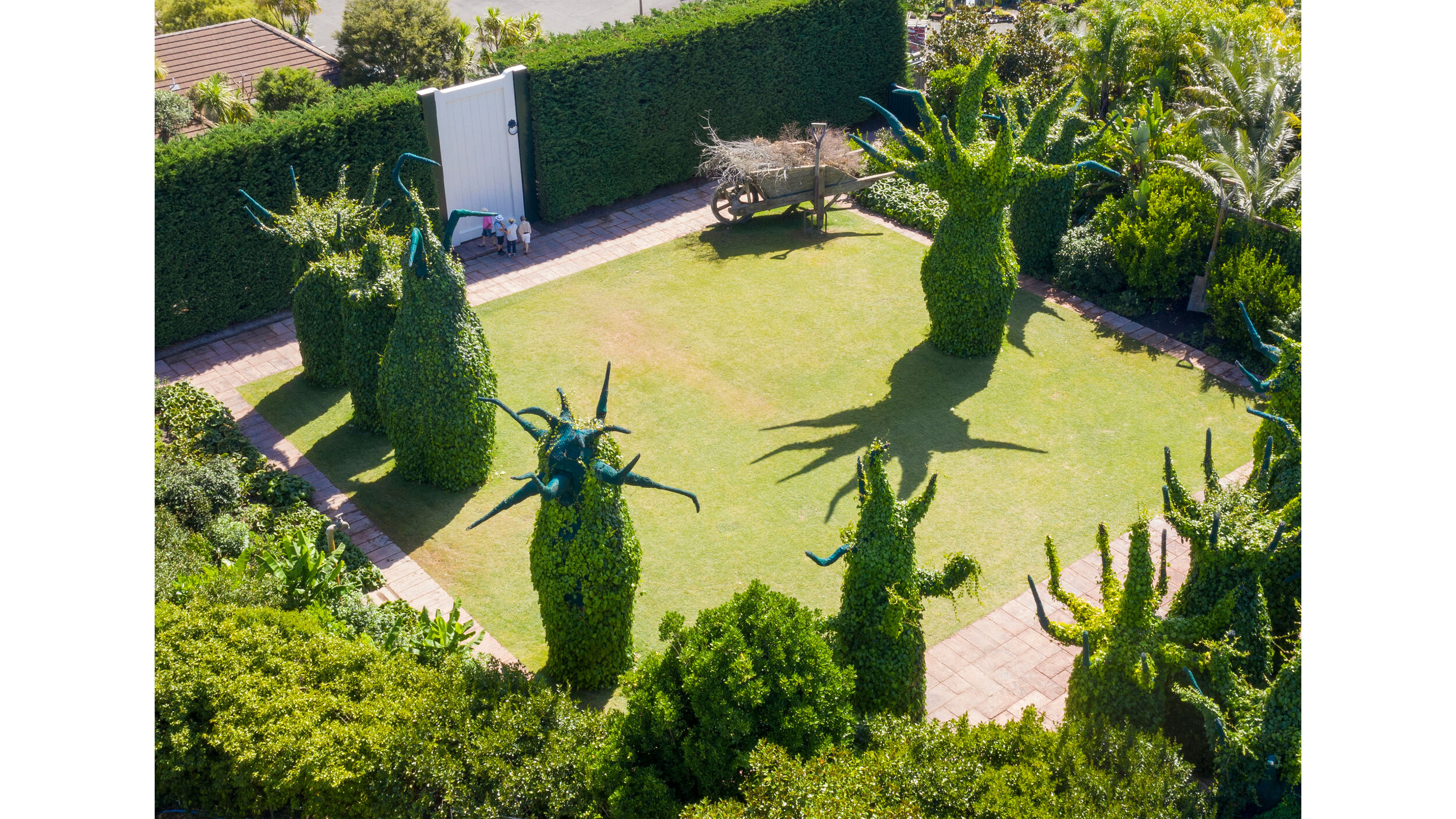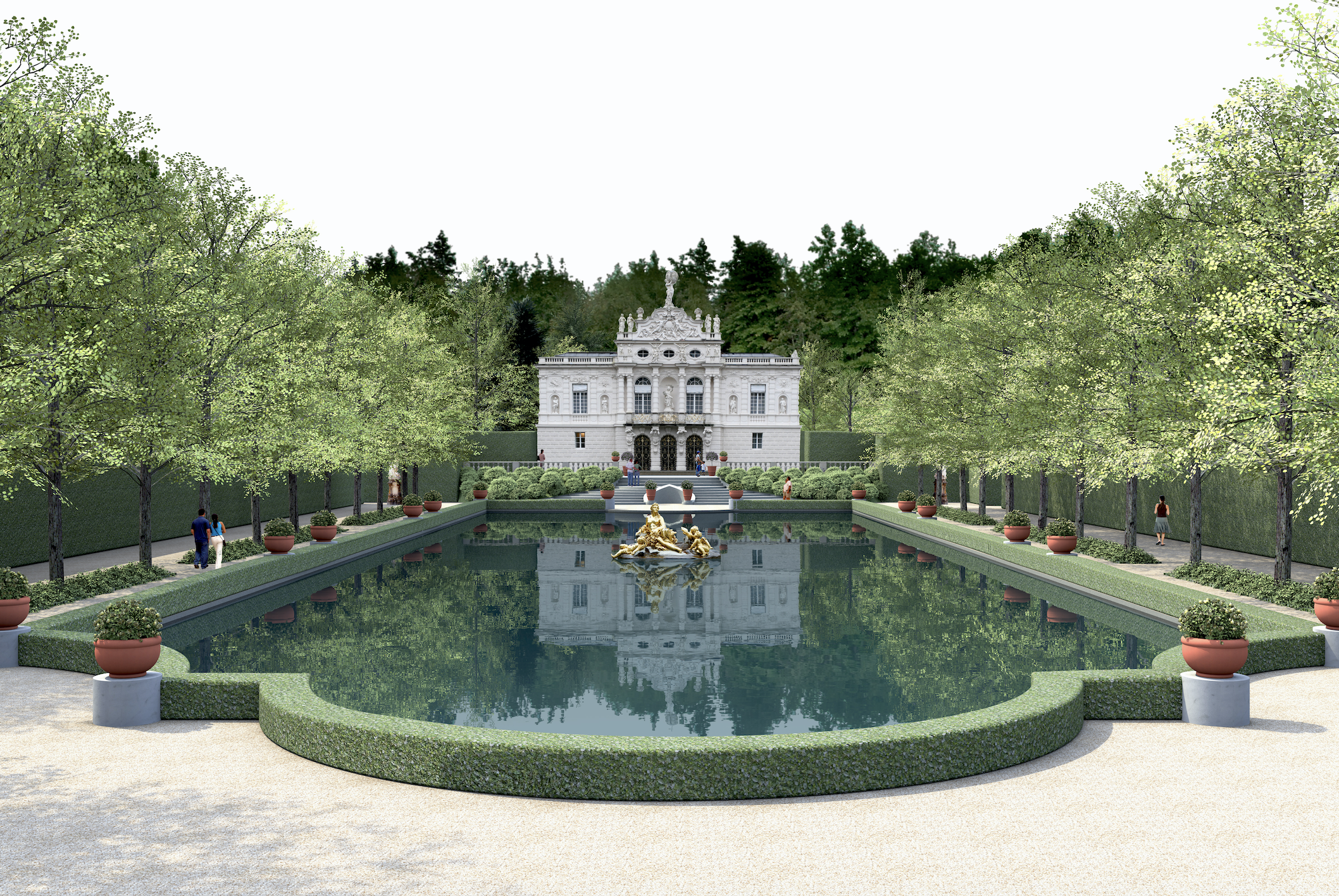Hamilton Gardens mastermind retires
Retiring landscape architect, Dr Peter Sergel, sees his work life’s project - Hamilton Gardens - as a type of museum which tells the story of gardens throughout the ages of man; from late Bronze age to today.
Each of the 16 -plus internationally-inspired plots are an artwork, revealing insights into the different ages of civilisation. Their religious beliefs, social structures, their arts and attitudes to nature.
Peter Sergel working on a model for the Surrealist garden
“When complete this collection of gardens will a story about the civilisations that have created each garden type,” Dr Sergel says.
He’s been the mastermind behind the gardens since 1978, when as a newbie at Hamilton City Council, he was tasked with developing a concept plan for the site on a former rubbish dump.
“I joined council intending to say for a short period to get work experience and learn from a landscape architect who was really highly regarded, Bill McLeary, who worked there,” says Dr Sergel. “And one of the first projects they gave me was the management plan for Hamilton Gardens.
An aerial of the gardens
“Council approved that plan - I don’t know if anyone read it. No budget was made available, so we had to go out and secure sponsorship for development”.
And so he’s stayed for 40 years, going from technical officer to director of the gardens.
His unique vision for Hamilton Gardens was inspired by his travels.
The Japanese Garden of Contemplation
“I did my OE in the 70s and I was really impressed by the modern museums I saw, where it wasn’t just a collection of artefacts on shelves. They were specialist museums that engaged you with a story.”
“Museums like Smithsonian museums of the American Indian, the Black American or Jewish Holocaust use very few artefacts, it’s all about telling the story. So we applied that concept to a garden. Rather than just having collections of plants, with a few pavilions and sculptures thrown in, everything is based around that story of gardens.”
The Surrealist garden
“Eventually there’ll be 31 gardens, each focusing on a different part of that story.”
It’s a winning concept. In 2014 the gardens received the International Garden of the Year award. Around a million visits are made each year. Dr Sergel himself has been in demand as an international speaker and travelled the world researching different projects.
A render of the Ancient Egyptian garden that’s expected to be completed by the end of 2021
As well as his design and managerial roles he’s been chief fundraising officer, working closely with community groups to raise funds to create the gardens.
He’s set up trusts to fundraise and promote the gardens and enjoyed a long, productive working relationship with the Friends of the Hamilton Gardens.
A render of the Baroque gardens, which have yet to be built.
Dr Sergel has also driven other local projects such as the 1980s Riverbank Development Scheme and the redevelopment of Woodlands (an historic estate). He’s instigated several events, the best-known being the Hamilton Gardens Arts Festival, which he established in 1998 and ran for the first few years before creating the foundation that now runs it.
While he’s retiring, his association with the council will continue on a part-time basis, as he helps bring the Ancient Egyptian, Medieval, Pacifica and Baroque gardens to fruition over the next few years.
Lance Vervoort, Hamilton City Council’s General Manager Community and Deputy Chief Executive says Dr Sergel’s outstanding vision and talent for design are simply irreplaceable.
“Dr Sergel has been a force of nature at the Hamilton Gardens. His passion, creativity and ability to inspire others with his vision have made the Gardens the magnificent city and regional asset it is today.”





